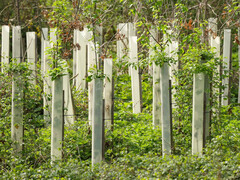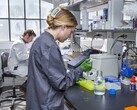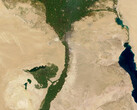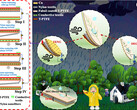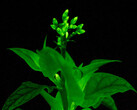In the 1930s, a pronounced drought in the Midwest of the USA coincided with serious environmental changes in the previous decades. Massive deforestation, the eradication of huge populations of bison and intensive farming for wheat cultivation gave the Great Plains a new nickname.
The formerly fertile area, which had been completely changed by droughts and dust storms, was called the "Dust Bowl". At the same time, the causes were quickly recognized and a separate authority was founded in the same decade.
It immediately began to do the obvious. It was not only in the Great Plains that an almost 100-miles-wide green strip was created to protect against erosion. Hundreds of millions of trees were planted and whole swathes of land reforested across the entire eastern USA, which was almost 90 percent forested before European settlement.
The conditions are perfect for studying the consequences of extensive forest restoration. While many new forests have grown in the east, these are lacking in the western part of the USA.
Fittingly, the researchers who have now published their results were able to draw on reliable weather data from the entire USA spanning well over 100 years. There are not many regions in the world where this would be possible.
The results show that the average temperature in the East has remained almost the same despite climate change. In areas with a high rate of afforestation, the average temperature has even fallen slightly over a large area. In the west of the USA, on the other hand, there has been a significant rise in temperature almost everywhere.
The differences are even greater when areas close to newly created forests are considered. The average annual temperature is 1 to 3 degrees below the value that prevailed before planting.
At peak times, i.e. during hot spells around midday, the difference is as much as 7 degrees. The study shows how strong the cooling effect can be on nearby cities, for example, if trees are planted on a large scale.
And there are currently quite a few missing. Depending on the source, hundreds of billions or even a trillion new trees need to be planted worldwide. And yet they would only be one piece of the puzzle in mitigating or even halting the effects of rising and rising temperatures.
The successes, as we can also see, will be noticeable and measurable in 50 or 60 years' time. In any case, it is time to start.
Source(s)
AGU via The Guardian




